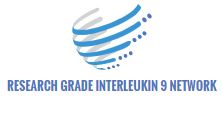The World Cancer Research Fund International has launched 32 anticancer effects (ACEs) that focused each stage of most cancers processes. Thus, we designed two formulation of natural meals mixture Diet I and Diet II, primarily produced by elite crop varieties rich in ACEs with completely different combination ratios, and evaluated their most cancers preventive effects on N-nitrosodiethylamine (NDEA)-induced hepatocarcinogenesis.
After 20 weeks of dietary intervention, Diet I and Diet II diminished incidence, dimension, and quantity of hepatic nodules (p <0.01) and prevented hepatic tumor formation in NDEA-induced hepatocarcinogenesis rats. Low-grade hepatic dysplasia incidence was 20% for Diet II and 40% for Diet I, and obvious hepatocellular carcinomas (HCC) charges had been each 0, whereas 90% HCC in management weight-reduction plan remedy group (p <0.01).
Diet I and Diet II ameliorated irregular liver perform enzymes, diminished serum alpha fetal protein, tumor-specific progress issue, dickkopf-related protein 1, tumor necrosis factor-alpha and interleukin-6 ranges, regulated hepatic section I and II xenobiotic-metabolizing enzymes, enhanced antioxidant capability, suppressed NDEA-initiated oxidative DNA harm, and induced apoptosis coupled to down-regulation of proinflammatory, invasion, and angiogenesis markers.

Daily consumption of mixture weight-reduction plan produced from ACEs-rich elite crop varieties can successfully forestall or delay prevalence and improvement of NDEA-induced hepatocarcinogenesis in rats.
Acute kidney harm in cirrhosis: implications for liver transplantation
Acute kidney harm (AKI) in cirrhosis consists of various phenotypes, with hepatorenal syndrome (HRS) representing a single entity. Prompt recognition and analysis of AKI trigger identifies applicable therapeutic measures.
This assessment offers an outline of AKI definitions, highlights challenges in quantifying renal impairment in cirrhosis, lists novel diagnostic AKI biomarkers, and summarizes transplantation implications.Biomarkers (neutrophil gelatinase-associated lipocalin, kidney harm molecule-1, interleukin-18, and liver-type fatty acid-binding protein) could help in the identification of underlying acute tubular necrosis.
Of these, neutrophil gelatinase-associated lipocalin is essentially the most promising; nevertheless, important overlap happens amongst AKI phenotypes, with diagnostic values but to be outlined. Mainstay remedy of HRS consists of albumin and vasopressors. Acute-on-chronic liver failure grade independently predicts response to terlipressin remedy. Many end-stage liver illness sufferers with AKI have underlying power kidney illness with vital implications on pre and postliver transplantation mortality.
Simultaneous liver-kidney transplant candidacy is predicated on low probability of renal restoration.Novel biomarkers could help in identification of acute tubular necrosis and protracted/extreme AKI.
Norepinephrine has been advised to be inferior to terlipressin, with extra analysis required. Increasing acute-on-chronic liver failure grade correlates with decrease probability of vasopressor response in HRS. Severe preliver transplantation AKI confers considerably worse postliver transplantation renal outcomes.
BACKGROUND
Acute and power stress can result in a dysregulation of the immune response. Growing proof suggests peripheral immune dysregulation and low-grade systemic irritation in posttraumatic stress dysfunction (PTSD), with quite a few experiences of elevated plasma interleukin-6 (IL-6) ranges. However, only some research have assessed IL-6 ranges in the cerebrospinal fluid (CSF). Most of these have used single time-point measurements, and thus can’t take circadian degree variability and CSF-plasma IL-6 correlations into consideration.
METHODS
This research used time-matched, sequential 24-h plasma and CSF measurements to analyze the effects of fight stress and PTSD on physiologic ranges and biorhythmicity of IL-6 in 35 male research volunteers, divided in three teams: (PTSD = 12, fight controls, CC = 12, and non-deployed wholesome controls, HC = 11).RESULTSOur findings present no variations in diurnal imply concentrations of plasma and CSF IL-6 throughout the three comparability teams. However, a considerably blunted circadian rhythm of plasma IL-6 throughout 24 h was noticed in all combat-zone deployed contributors, with or with out PTSD, in comparability to HC. CSF IL-6 rhythmicity was unaffected by fight deployment or PTSD.
CONCLUSIONS
Although no important group variations in imply IL-6 focus in both CSF or plasma over a 24-h timeframe was noticed, we offer first proof for a disrupted peripheral IL-6 circadian rhythm as a sequel of fight deployment, with this disruption occurring in each PTSD and CC teams. The plasma IL-6 circadian blunting stays to be replicated and its trigger elucidated in future analysis.

